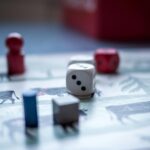Flashcards have stood the test of time as one of the most effective tools for memorization and learning. With the right strategy, flashcards can significantly enhance your study sessions, making the process not only more efficient but also more enjoyable. Whether you’re a student preparing for exams, a professional brushing up on industry knowledge, or simply a lifelong learner, understanding how to optimize your flashcard practice can elevate your learning game to new heights. This ultimate guide delves into strategies, tips, and creative uses of flashcards to boost your learning efficacy.
Why Use Flashcards for Studying?
Flashcards engage active recall, which forces your brain to remember a concept from scratch rather than simply recognizing it. This method strengthens memory retention and quickens the retrieval process. Moreover, flashcards introduce spaced repetition, a technique involving reviewing material over increasing intervals, which is scientifically proven to improve long-term memorization.
Creating Effective Flashcards
- Keep it simple: Each flashcard should focus on a single concept to avoid confusion.
- Be concise: Use keywords or phrases rather than full sentences to promote quicker recall.
- Incorporate visuals: Images can help associate concepts and improve memory retention.
- Use both sides: Pose a question or keyword on one side, and put the answer or explanation on the reverse.
Techniques for Using Flashcards
Simply flipping through flashcards may not yield the best results. Employing varied techniques can amplify their effectiveness:
- The Leitner System: A spaced repetition technique that involves sorting flashcards into groups based on how well you know each one. Cards in the “know well” group are reviewed less frequently than those in the “need more practice” group.
- Randomization: Shuffle your deck regularly to prevent your brain from simply memorizing the order of the cards.
- Active Engagement: Read the card aloud, explain the concept to someone else, or use the card to make a sentence. This promotes deeper learning.
Digital vs. Physical Flashcards
| Type | Pros | Cons |
|---|---|---|
| Digital | Easy to carry a large number, incorporates multimedia, automated spaced repetition | May lead to screen fatigue, can be distracting |
| Physical | Tangible engagement, better for spatial and tactile learners, no screen time | Difficult to manage large sets, lacks automated repetition features |
Maximizing Your Flashcard Sessions
To fully harness the power of flashcards, consistency, and adaptation are key. Allocate regular, short sessions each day rather than long, infrequent cramming periods. Monitor your progress and adjust your techniques as needed. Remember, the goal is not just to memorize but to understand and apply the information.
Tips for Success
- Start early and revise often to leverage the spacing effect.
- Integrate creative elements like mind maps or mnemonics to enrich your learning.
- Pair flashcard sessions with complementary study techniques such as practice tests or group study.
- Stay hydrated and take short breaks during study sessions to maintain optimal focus.
Flashcards, when used correctly, can significantly bolster your studying efficiency and effectiveness. This timeless tool, complemented by strategic techniques and a commitment to regular review, can transform the way you learn, retain, and retrieve information. Happy studying!



